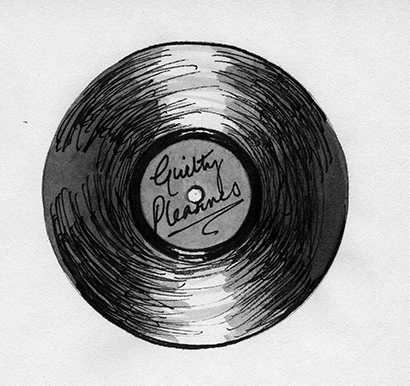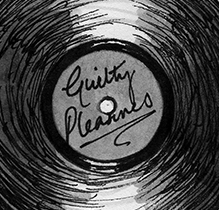
Professors Richard So and Adrienne Brown could barely contain their joy. The talk they headlined, part of the Guilty Pleasures lunchtime discussion series—sponsored by the English department at the University of Chicago—was titled “Dirty Projections: White Rap and Black Indie Rock.” It afforded them an apparently rare opportunity to be rabid music fans in public.
Their talk centered on the relationship between traditionally black music, such as hip-hop, and the predominantly white area of indie rock. They also discussed the racial and social undertones of each, exploring the choked channels of appropriation and influence.
For So, the relationship between the genres is a positive one. He understands cross-over acts as a result of shared appreciation and collaborative spirit. “It’s a formal utopianism,” he reasoned. “I like stuff that sounds good—organic, not contrived.” From this self-described “naïve appreciation of music,” he comes to an understanding of the interwoven reality of American music. He spoke about a circular effect, a rotating series of influence from acts like Timbaland to the Dirty Projectors to Solange Knowles.
“We don’t know where it starts, but we know where it connects,” he said. For So, the popular music scene is collaborative; acts like rapper Danny Brown collaborate with indie electronic rockers Purity Ring because Danny Brown appreciates Purity Ring as musicians and vice versa.
Brown approached the relationship with a bit more cynicism. Using Jay-Z as an example, she suggests that the root of these collaborations and sharing of styles arose from corporate and economic motivating factors. She suggests that a “business-savvy rapper” like Jay-Z would be served by having his finger to the pulse of what is popular and then moving to capitalize on it. Using examples such as Limp Bizkit’s unfortunate collaboration with Method Man in the late nineties as well as Jay-Z himself and his work with rock/rappers Linkin Park, Brown presents the other side of the argument. She thinks of music as sometimes corporate and sometimes personal, but, most of the time, as economically driven.
Regardless of motivation, the truth remains that musical crossover is now a calling card of the American music scene. The discussion following these arguments was centered around this fact. Revolving mostly around the idea of labels, the discussion led to the question, What do we call certain genres today if they are rolled and melded into one another so frequently? This cross-genre consciousness informed the discussion, but the truth remained: in the changing landscape of American music, it’s adapt or be forgotten.

